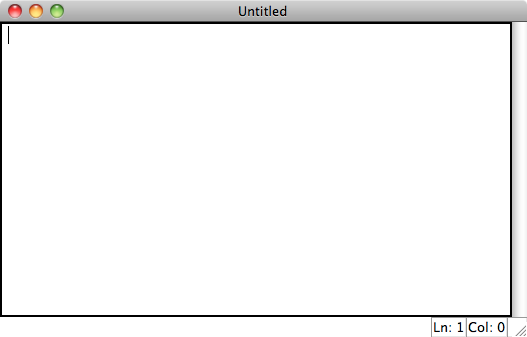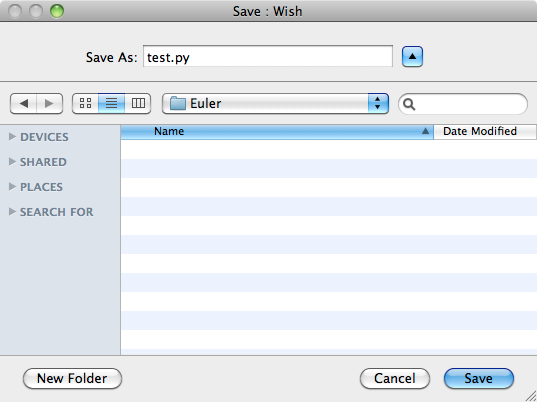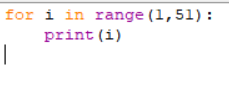Getting Started With Python Programming
Contents
Important
This guide takes you through the process of getting started with programming using the Python programming language. The only language that AoPS teaches (as of May 16, 2021) in a class is Python.
The sections flow from one to the next so it's recommended to read through this document in order from top to bottom. If you are interested in learning the basics of Python, check out the Intro to Python class.
If you find that this is too easy, make sure you've read everything through (at least roughly), and check out Basic Programming With Python.
Installing Python
Note: Introduction to Programming with Python students on a Chromebook should use an online Python compiler such as this one. There is not a good way for students to install Python on a Chromebook and use it as a learning environment. Students in Intermediate Programming with Python should not use a Chromebook because they will need the tkinter GUI toolkit for the class. Instead, Intermediate Programming with Python students should install Python on a regular computer.
Python is a useful and popular computer programming language. Confusingly, Python has two major versions (2 and 3) and they are not fully compatible. We recommend using the most recent release of version 3. (This is the version that our Introduction to Programming with Python course uses -- if you are enrolled in that class, you must have Python 3.) Python 2 has reached end-of-life, so its use is strongly discouraged.
- Go to the Python download page at http://www.python.org/downloads. Near the top of the page, there will be a list of download links for the Python 3.9.x installer. (The x will be replaced by a number -- as of July 2021 the version is 3.9.6.) If you are given multiple options, click on the link that corresponds to your computer type (Windows or Mac, 32-bit or 64-bit -- if you're not sure, use the 32-bit version.) Some browsers will save the file automatically, others may pop up a box asking you if you want to save the file, in which case you should click the "save file" option. Depending on how your browser is configured, you may be asked where to save the file. If this is the case, keep track of where you save the installer.
- Find where the installer was downloaded and double click on it to run it. On most browsers, you should simply be able to double-click the installer from the browser's "Downloads" window or menu. You may also have to click "Run" or "Yes" to a security window -- do this if necessary.
- The setup wizard should launch. You should just click "Next" for every option in the setup wizard (i.e. use the defaults) unless you have some specific reason not to.
- Familiarize yourself with the Python shell and IDLE text editor by running through the two sections below.
- If you like everything dark, you may go to Options->Configure IDLE->Highlights and change it to the built-in dark theme
For GNU/Linux users
Installing python on GNU/Linux is a different story. You should enter the command in the terminal specified to your distro.
- For Ubuntu, Debian and Mint: $sudo apt install python3
- For RHEL / CentOS / Scientific / Fedora: #sudo dnf install python3
- For Arch Based distros - sudo pacman -S python
Programming
Before you can code, you must understand data types.
Data Types
int - an integer - Ex: 0, 1, 2
float - a floating point decimal - Ex: 1.2, 2., .2
str - a string (think text) - Ex: "Hi", 'Name?'
list - a list of data types - Ex: ["Nice", 3, 5.4]
dict - a dictionary - Ex: {'one':'uno', 'two': 'dos', 'three': 'tres'}
set - an unordered list of unique data types - Ex: {1,2,3}
Yay, it's time to program! The next few sections will talk about some very basic programming. We will program a few programs as a demonstration.
Hello World!
The IDLE Text Editor
For most programming needs, you'll want to edit your program in a separate document and then run it. Luckily, IDLE comes with its own built-in text editor.
To get started, go to the File menu of the Python Shell and click on "New Window". This should give you a blank document with the title "Untitled" as shown below:
You'll need to save your file before running it, so you might as well save it now. Make sure that you name your file with a file name with a file extension of .py (so it ends with .py), so your computer knows that it is a Python program. Here, we save ours as test.py:
To get acquainted with the text editor, let's write our first Python program! Let's write a program that will do the following task:
Print all the integers from 1 to 50 inclusive.
We can achieve this by using a loop that can loop through all the integers. Luckily, Python has a function just for doing that! We use a for loop with the following code:
Note that as you type, the keywords like "for", "in", "range" and "print" get colored in orange or purple!
Also, note that you must copy the exact same indentation. Even though the editor automatically indents for you when you type for i in range(1, 51):, the proper indentation in Python is super important! If you don't do it correctly, the program will not compile correctly.
You can indent by pressing Tab on your keyboard.
This for loop means to iterate from 1 to 51 excluding the 51 and including the 1. Every iteration, Python will print out the number that it is iterating through.
Now that you've written this code, you probably want to run it and test it out. You can do so by going to the Run menu and hitting "Run Module" (or by pressing F5 on your keyboard). The ===RESTART=== line means that Python is clearing all the work you've previously done before it starts running your program. The program should execute and print all the integers to the Python Shell. If it didn't, then make sure your code exactly matches the code above. This is what you should get:
If your code worked, congratulations! You have written your very first program! Now, let's try another more useful one.
Find the sum of all the positive multiples of 3 below 1000.
We first need to create a new file. Go into the Python Shell and click on New Window again. Remember, we must save our file first. We can save it as test2.py. Now, on to the coding! We can solve this by keeping a running total: we'll start with the smallest positive multiple of 3 and go up one multiple at a time keeping track of the sum, stopping once we hit 1000. We can do this with the following code:
This is called a while loop. While loops keep iterating until a statement becomes false. Notice that as you type the above code, the keywords ("while" and "print") will automatically get colored -- this makes the code easier to read. Also, after typing the line "while i < 1000:", the editor will automatically start indenting for you. When you get to the line "print(total)", you'll need to use the backspace key to remove the indentation. It is important that the code looks exactly like it does in the screenshot above. Again, in Python, proper indentation is very important!
This program basically works by incrementing the variable ![]() by 3 every time and adding it to the variable
by 3 every time and adding it to the variable ![]() . The
. The ![]() operation might be intimidating at first. However, the statement
operation might be intimidating at first. However, the statement ![]() is just a shorthand for
is just a shorthand for ![]() . (So
. (So ![]() means
means ![]() .)
.)
Run your program, and you should get this:
Again, the ===RESTART=== line just means that Python is clearing all the work you've previously done before it starts running your program. Then, the program runs and we get our answer, 166833. If you instead get an error message or a different answer, check that your program exactly matches the screenshot above, and try it again.
Congrats! You have written your first two Python programs!
Pycharm
Being one of the most popular editors, supporting every language and an extensive extension collection!
install the free version of Pycharm at https://www.jetbrains.com/pycharm/download/#section=mac for macs https://www.jetbrains.com/pycharm/download/#section=windows for windows https://www.jetbrains.com/pycharm/download/#section=linux for linux
What's Next?
Now that you've learned the very basics of getting Python going, there's a bunch of tutorials you can look at which are listed on the Python website. Go check them out! Another great resource is "Stack Overflow," a forums website built for people who would like to talk about and get help with programming. It is also recommended that you check out a wiki article discussing more advanced python, namely Basic Programming With Python.
Or, you can take our Introduction to Programming with Python online course!















